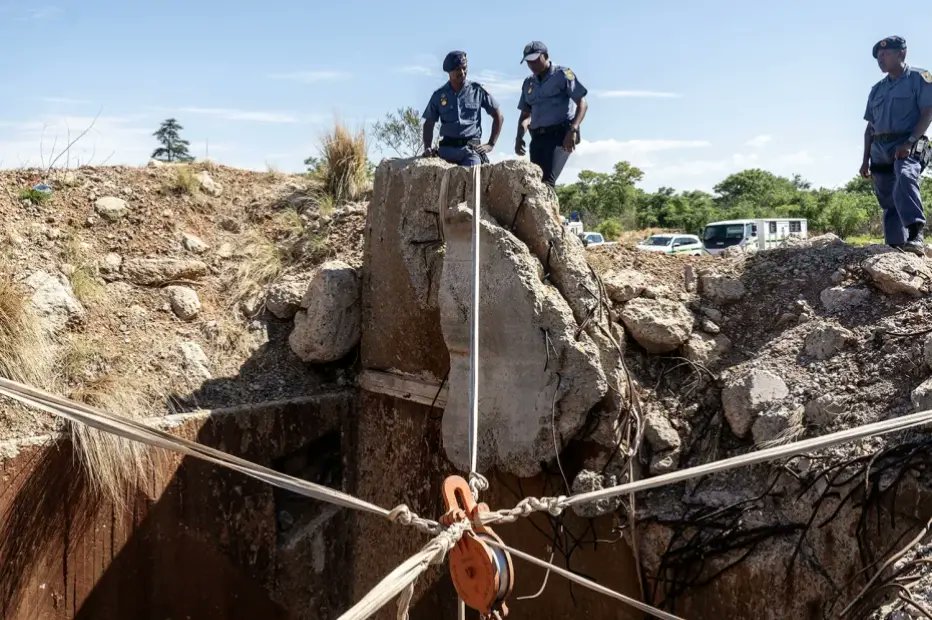By Johnathan Paoli
The government has hit back at civil society groups over the information they are sharing regarding illegal miners in Stilfontein in the North West.
On Sunday, the Government Communication and Information System (GCIS) and the National Joint Operational and Intelligence Structure claimed that several misconceptions have surfaced.
This follows a report by the Stilfontein Crisis Committee (SCC), Lawyers for Human Rights (LHR) and community organisation, Mining Affected Communities United in Action (Macua).
“Government acknowledges the presence of various narratives surrounding this issue. It is important to rely on verified information from official channels. SAPS and other government bodies are committed to transparency and will continue to provide accurate updates on the situation,” they said in a statement.
They reiterated that some miners were voluntarily emerging from disused mine shafts, revealing their ability to exit independently. This is contrary to information from advocacy groups that many of them are too weak to surface.
The state believes their delayed emergence is a strategy to avoid arrest.
The government also refuted claims that food supplies underground ran out months ago, saying that evidence indicated that the miners had access to provisions until recently.
Also, allegations that the police were trapping miners underground have been dismissed.
“SAPS has implemented measures to secure the area and prevent further illegal activities, but designated exit points have been established to allow miners to surface safely and face due legal processes,” the statement read.
It said the government remained committed to upholding the rule of law while ensuring the humane treatment of individuals who surfaced.
Defending the delay in completing the rescue operations, the government outlined significant differences between Stilfontein and the rescue of trapped miners in Sabie, Mpumalanga.
Unlike other operations, such as Sabie’s 150m deep shaft, Stilfontein’s mine shaft extended 2km underground, making rescue efforts complex and high-risk. It needed specialised resources and expertise, along with strict adherence to proper procurement processes.
The government urged the illegal miners to resurface and engage with law enforcement to secure their safety.
Advocacy groups have alleged misinformation and incorrect reports by both local authorities and certain media outlets.
A factsheet compiled by the SCC, LHR and Macua claims the physical and logistical impossibilities of independent escape.
The SCC, following the LHR report, has insisted that food and aid were shared equally underground despite months of severe shortages.
The report said that the demands for condiments could be explained, as one survivor described rationing to the extent that “a tablespoon of tomato sauce or mayonnaise could stave off hunger for 24 hours”.
The SCC called for increased transparency and accountability from authorities and the media, emphasising that misinformation and biased narratives were costing lives, influencing public sentiment and impacting rescue efforts.
The mine, abandoned in 2015, was left without proper closure or rehabilitation, allowing “artisanal miners” to operate in dangerous conditions.
The SCC alleged that the mine’s neglect has burdened the Stilfontein community with environmental degradation and economic despair.
Earlier this month, the North Gauteng High Court ruled against requiring state departments to provide aid to the trapped miners.
The decision has been criticised by human rights organisations and community leaders, who argue that the government and Buffelsfontein Gold Mine Ltd. have failed in their legal obligations.
INSIDE POLITICS

